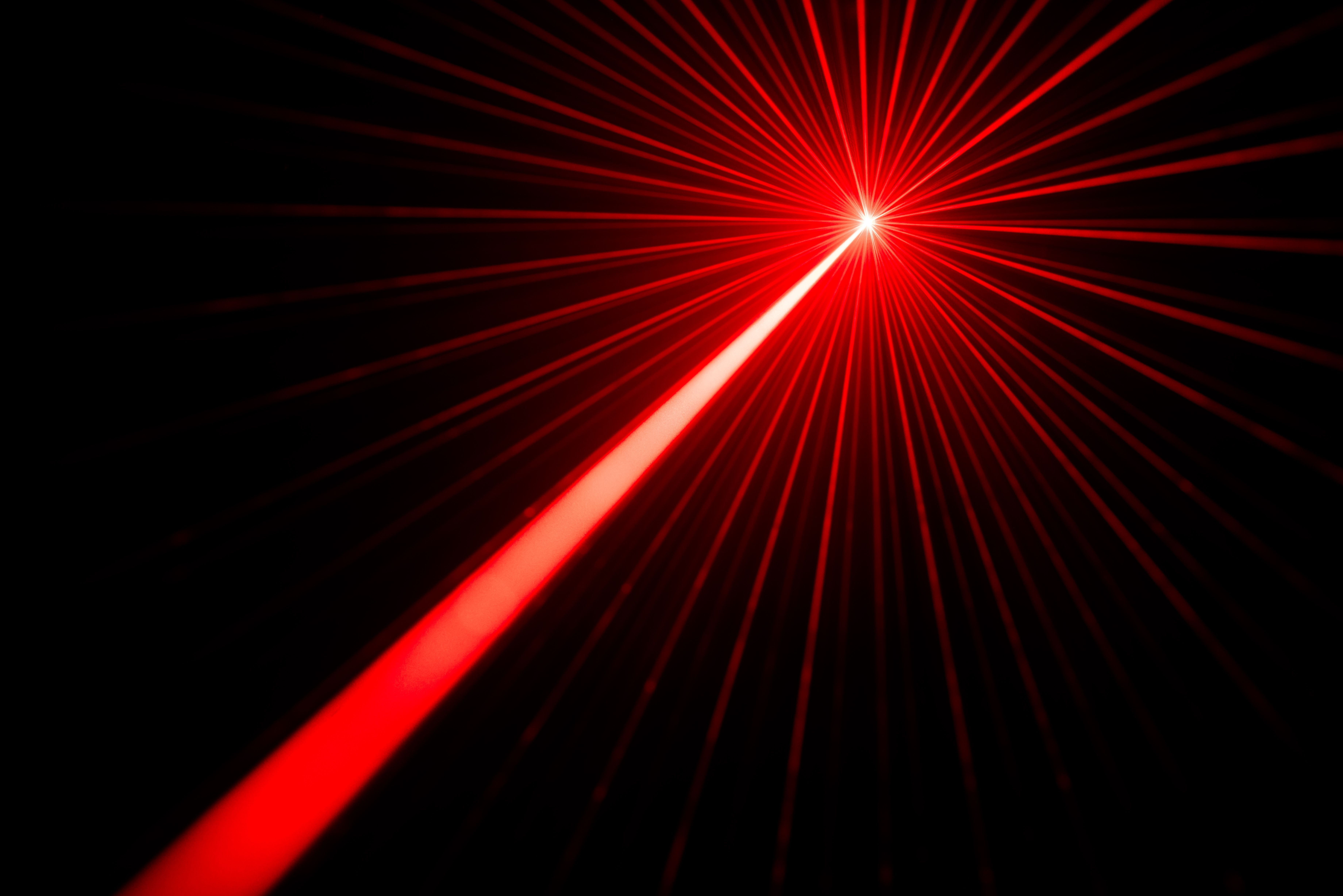New Laser Techniques Unlock Deuterium Release from Aluminum Layers
In a recent study, quadrupole mass spectrometry (QMS) was used to test the amount of deuterium atoms from aluminum layers.
A recent study led by Sasa-Alexandra Yehia-Alexe of the National Institute for Lasers, Plasma and Radiation Physics and the University of Bucharest explored the specifics of laser induced ablation (LIA) and laser induced desorption (LID) techniques using a 1053-nm laser source (1). The study was published in Spectrochimica Acta Part B: Atomic Spectroscopy (1).
Laser beam light effect | Image Credit: © donatas1205 - stock.adobe.com

The study focused on 1-μm aluminum layers created through using a high-power impulse magnetron sputtering technique on substrates with varying surface properties. The crucial aspect was the software-controlled manipulation of laser pulse energy, enabling a seamless transition from layer ablation to layer desorption (1).
The research team evaluated the quantity of the released deuterium after using quadrupole mass spectrometry (QMS) at the end of the laser-induced processes. They compared it to the results received with thermal desorption spectroscopy, which revealed an approximate total of 2.6 × 10²¹ D at/m² of deuterium in the analyzed sample (1). The mass spectra data disclosed that 85% (2.2 × 10²¹ D at/m²) and 9% (0.2 × 10²¹ D at/m²) of the total deuterium atoms were released via LIA and LID, respectively (1).
The research team also were able to determine the boundaries between the ablation and desorption processes by conducting mathematical modeling of the data. The analysis of the aluminum layer surfaces in conjunction with the substrate surface quality provided critical insights into the mechanisms governing the release of deuterium atoms via these laser-induced processes (1).
However, the biggest, and most important, conclusion was that the research team was able to confirm their findings. By using optical emission spectroscopy (OES), the research team validated that the substrate-layer interface had been reached during LIA-QMS analysis.
From advancing our understanding of materials science to potentially revolutionizing energy applications, these newly unveiled laser techniques hold promise for manipulating atomic structures within materials. This opens avenues for further research, driving innovations in energy production and material engineering.This study showcases the potential of laser technology in manipulating atomic behavior within materials.
This article was written with the help of artificial intelligence and has been edited to ensure accuracy and clarity. You can read more about our policy for using AI here.
Reference
(1) Yehia-Alexe, S.-A.; Groza, A.; Serbanescu, M.; et al. Considerations on hydrogen isotopes release from thin films by laser induced ablation and laser induced desorption techniques. Spectrochimica Acta Part B: At. Spectrosc. 2023, 208, 106774. DOI: 10.1016/j.sab.2023.106774
Mass Spectrometry for Forensic Analysis: An Interview with Glen Jackson
November 27th 2024As part of “The Future of Forensic Analysis” content series, Spectroscopy sat down with Glen P. Jackson of West Virginia University to talk about the historical development of mass spectrometry in forensic analysis.
Detecting Cancer Biomarkers in Canines: An Interview with Landulfo Silveira Jr.
November 5th 2024Spectroscopy sat down with Landulfo Silveira Jr. of Universidade Anhembi Morumbi-UAM and Center for Innovation, Technology and Education-CITÉ (São Paulo, Brazil) to talk about his team’s latest research using Raman spectroscopy to detect biomarkers of cancer in canine sera.